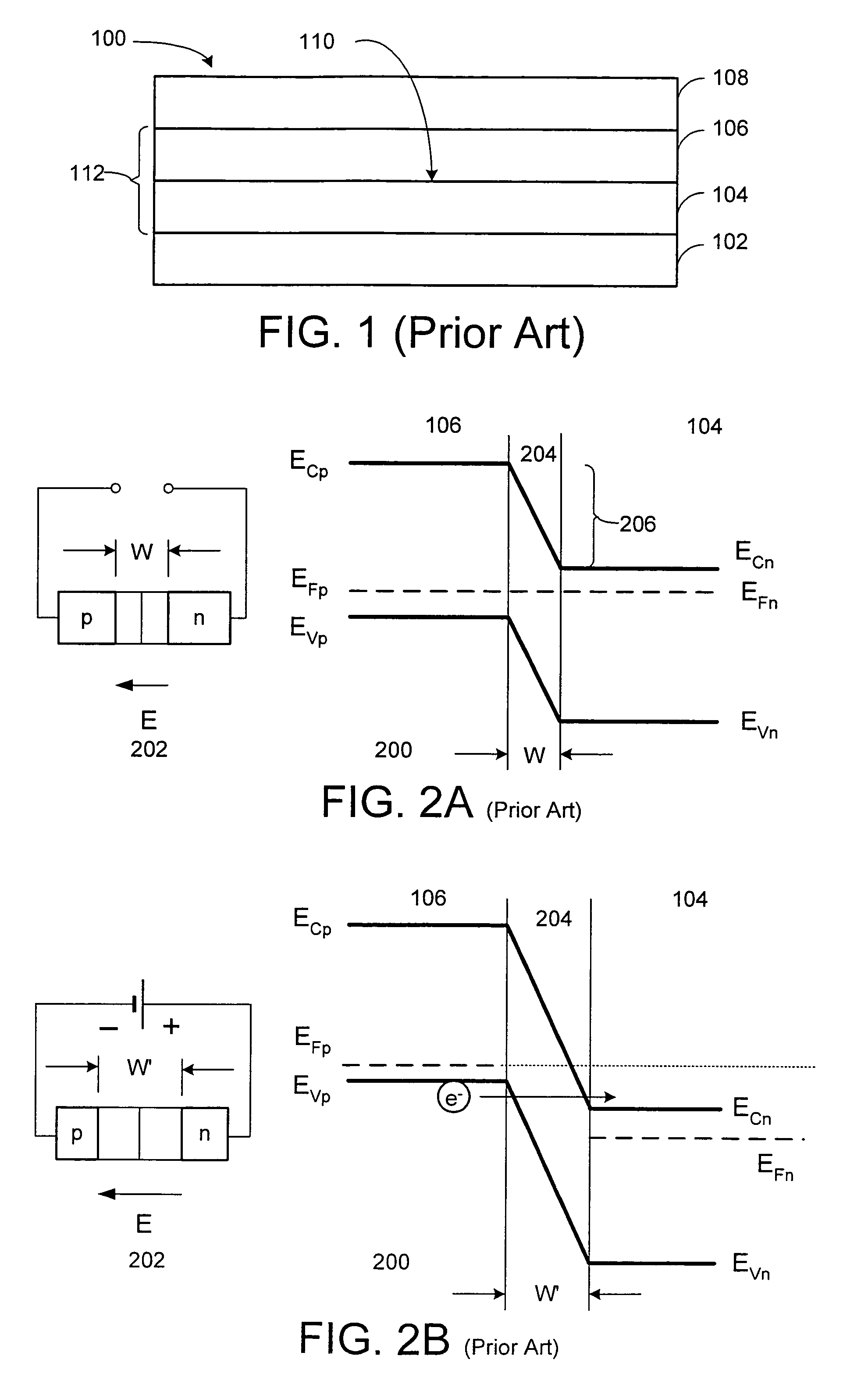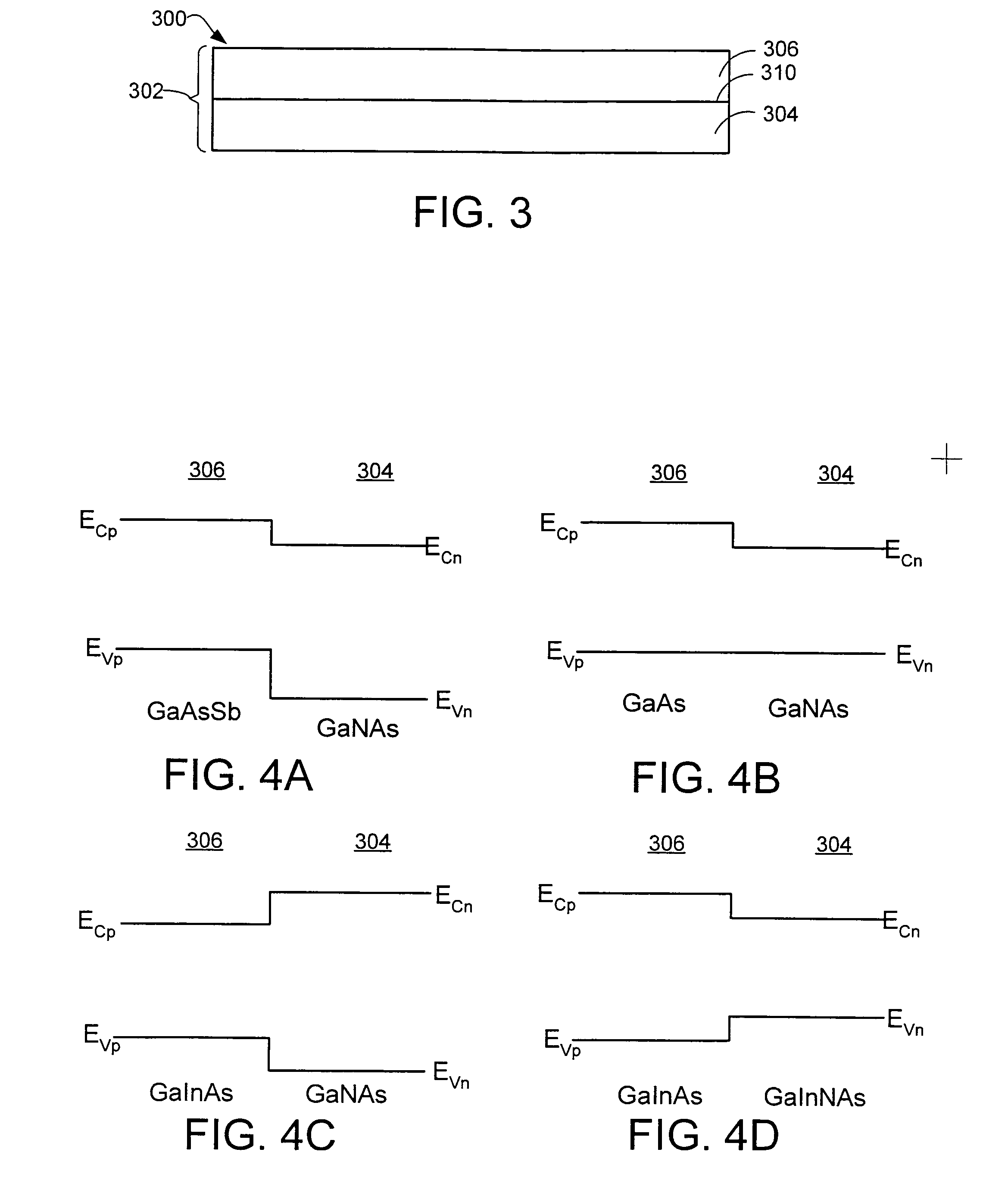Tunnel-junction structure incorporating N-type layer comprising nitrogen and a group VI dopant
a tunnel junction and nitrogen layer technology, applied in semiconductor devices, lasers, semiconductors, etc., can solve the problems of inability to realize the potential of vcsels to generate light with relatively long wavelengths, the use of relativly expensive fabry-perot (fp) and distributed-feedback (dfb) lasers, and the inability to produce reliable, cost-effective vcsels for use at the longer wavelengths used in medium- and long-haul fiber-opti
- Summary
- Abstract
- Description
- Claims
- Application Information
AI Technical Summary
Benefits of technology
Problems solved by technology
Method used
Image
Examples
Embodiment Construction
[0038]The invention is based on the realization that the less-than-predicted reduction in the voltage drop across the tunnel junction resulting from adding N to the semiconductor material of the n-type tunnel junction layer is the result of an inadequate concentration of active dopant atoms in the material of the n-type tunnel junction layer. Silicon it typically used as an n-type dopant in Group III–V materials, but a high active dopant concentration is difficult to obtain with this dopant. In a layer of Si-doped GaAs grown by MOCVD, the maximum active dopant concentration practically obtainable is a few times 1018 atoms / cc. This dopant concentration is marginally acceptable in a tunnel junction layer. When nitrogen is added to GaAs as described above, mutual passivation between N and Si reduces the concentration of active dopant atoms. The reduced effective doping concentration gives rise to the less-than-predicted reduction in the voltage drop resulting from adding N to the mater...
PUM
 Login to View More
Login to View More Abstract
Description
Claims
Application Information
 Login to View More
Login to View More - R&D
- Intellectual Property
- Life Sciences
- Materials
- Tech Scout
- Unparalleled Data Quality
- Higher Quality Content
- 60% Fewer Hallucinations
Browse by: Latest US Patents, China's latest patents, Technical Efficacy Thesaurus, Application Domain, Technology Topic, Popular Technical Reports.
© 2025 PatSnap. All rights reserved.Legal|Privacy policy|Modern Slavery Act Transparency Statement|Sitemap|About US| Contact US: help@patsnap.com



